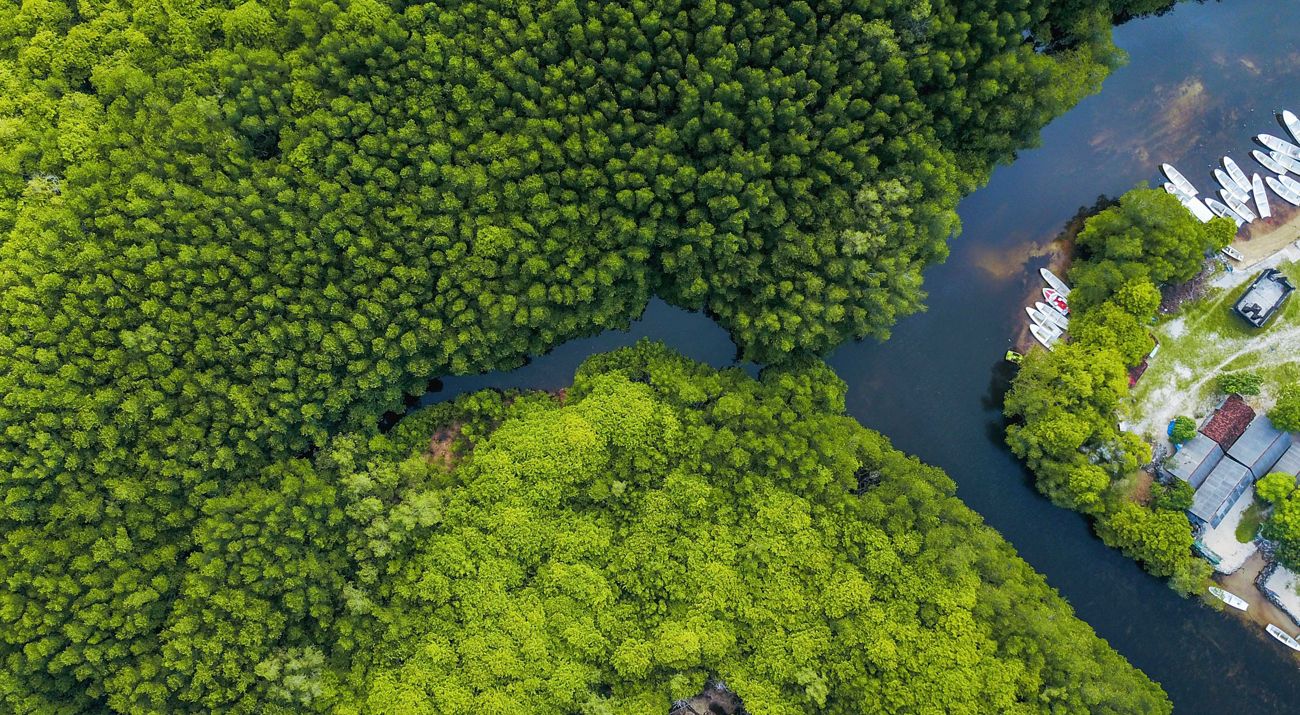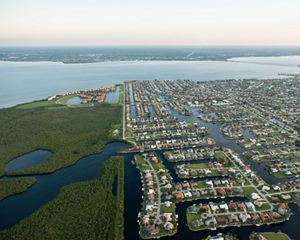Could Insuring Mangroves Save Them—and Protect Coastal Communities?
New research demonstrates the feasibility of mangrove insurance projects in the Gulf of America and the Caribbean, as well as identifying the most cost-effective locations to start.
Mangrove forests are allies of coastal communities both human and wild.
And as each hurricane season shows, the next big storm is inevitable. With more major hurricanes making landfall in Mexico, Florida and The Bahamas than any other place in the world, scientists have found that mangroves in these regions alone provide more than US$17 billion in annual flood protection benefits to coastal communities. Looking across the wider Caribbean, mangroves protect over half a million people from flooding on an annual basis. However, between stronger storms and new coastal development, mangrove forests are among the most threatened ecosystems worldwide.
But soon, an old finance tool could help protect these valuable natural assets in a new way. In three new reports, researchers demonstrate the feasibility of mangrove insurance projects in the Gulf Coast region and the Caribbean, and identify the most cost-effective locations to start.
Read on for three key facts about the potential of insurance policies for mangrove forests, and download the reports developed by The Nature Conservancy (TNC) in partnership with AXA-XL, Builders Initiative Foundation, CINVESTAV-Merida and the University of California Santa Cruz.
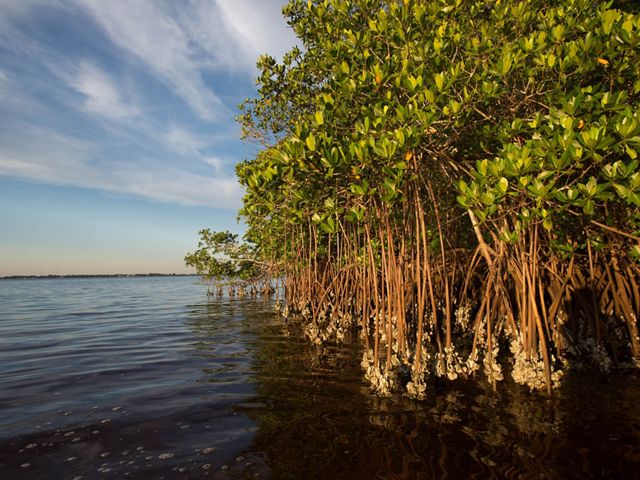
1.
The protective benefits of mangroves are significantly more valuable than the costs to restore them.
Healthy mangrove systems offer tremendous protection to coastal communities against storm surge and coastal erosion; they are also critical nursery areas that support local fisheries and overall marine biodiversity. Beyond habitat creation and coastal defense, mangrove forests store huge quantities of carbon, thereby mitigating greenhouse gas emissions and regulating global climate.
Losing these ecosystems and the services they provide is especially costly to the communities nearest to them. However, our research finds that post-storm mangrove restoration could be cost-effective along over 1,200 kilometers of coastline, spanning 80,000 hectares of mangroves, in Mexico, Florida and The Bahamas.
2.
Insuring mangrove forests could mean faster restoration efforts following storm damage.
Much like a homeowner buying insurance to protect their property from damage, the insurance approach outlined by our research team could help deliver funds to restore a community’s mangrove forests following storm damage. Pay-outs could likely be triggered when wind speed exceeds a pre-determined threshold, and could provide funding to the policyholder for restoration efforts within about two weeks after a qualifying storm. Many stakeholders could see value in such a policy, including local, state or national governments; residential homeowners; or commercial business owners.
3.
Other “natural infrastructure” has already been insured to enable conservation efforts.
In November 2022, TNC announced the establishment of the first coral reef insurance policy in the U.S., showing the pathway to expand this approach to other regions and ecosystems.
Prior to that, in 2019, TNC and partners developed the world’s first insurance policy on a marine ecosystem—a coral reef in Quintana Roo, Mexico. Similar to mangroves, healthy coral reefs can massively reduce wave energy, mitigating both the effects of storm surge and daily erosion to coastlines—and that benefits the lives and livelihoods of those on shore. Various stakeholders—including the state government, local hotel owners and the National Parks Commission—agreed on the importance of protecting the reef system and established the Coastal Zone Management Trust, which buys the insurance and is designed to collect and manage funds for maintenance and repair.
The trust has renewed the policy every year since 2019, even despite the pandemic-driven downturn in tourism revenue, indicating the value the partners place on protecting the coral reef and the benefits it provides to the region.
In a global first, Hurricane Delta triggered an insurance policy payout in October 2020. A portion of the payout was used to swiftly repair the reef ecosystem enabling it to recover more quickly, thus providing local communities with more consistent natural protection from coastal flooding and erosion, among other vital services.
Quote: Daniel Morchain
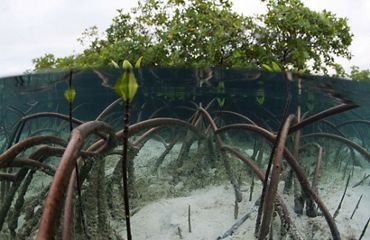
These findings put us one step closer to developing an innovative conservation finance approach that will protect mangrove forests for the benefit of people and nature.
Conservationists suspect that a similar concept may also work for coastal dunes, barrier beaches and salt marshes, and this new research supports that notion.
Mangrove Insurance Research
The reports below were developed by TNC in collaboration with partners at AXA XL, Builders Initiative Foundation, CINVESTAV-Merida, and the University of California, Santa Cruz. They document the findings of our mangrove insurance feasibility assessment in the Gulf Coast region and Caribbean, and identify where a mangrove insurance policy would be most cost-effective.
-
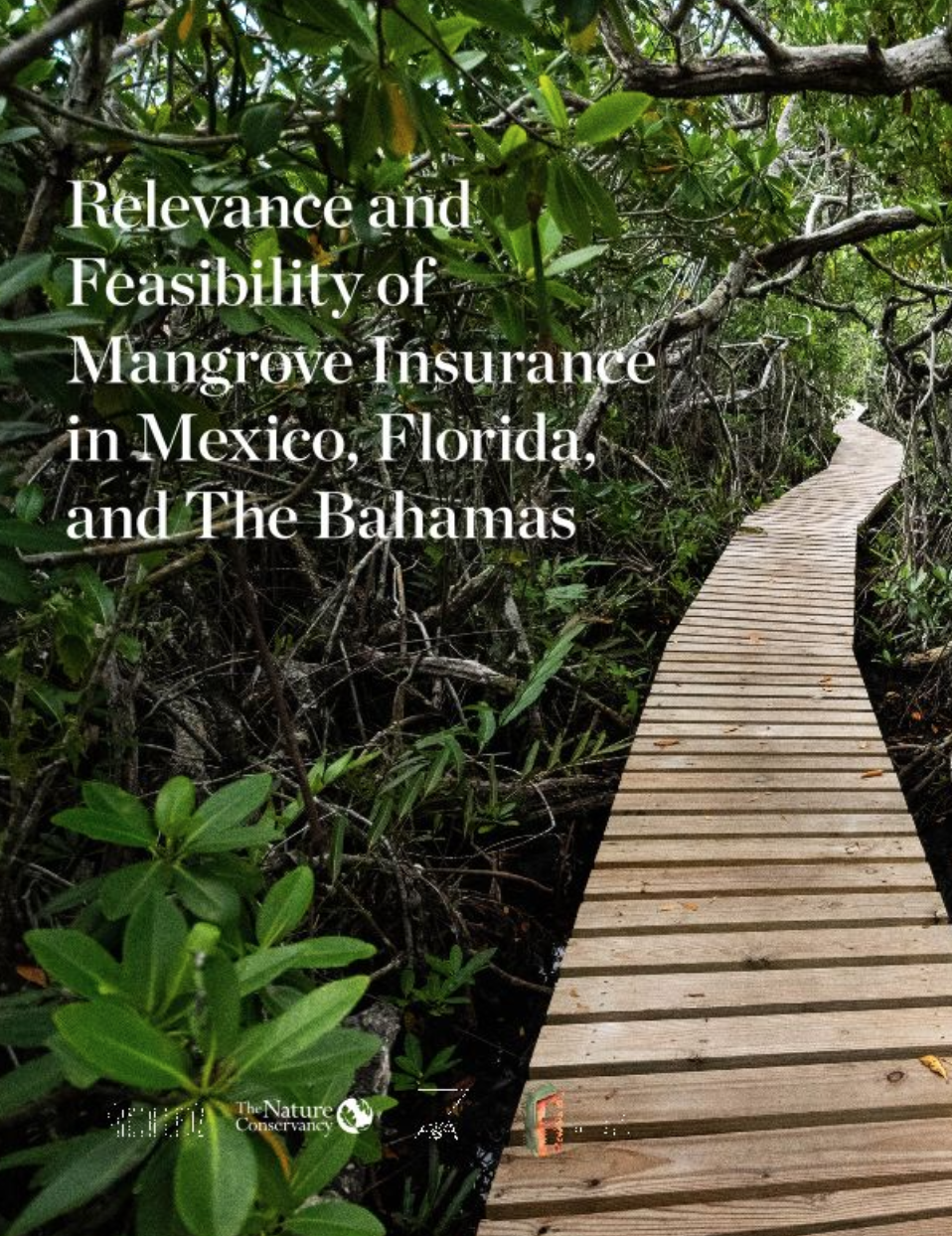
Relevance and Feasibility of Mangrove Insurance
Report
Making the case for initiating mangrove insurance and where it could be deployed. Download the report in Spanish
DOWNLOAD -
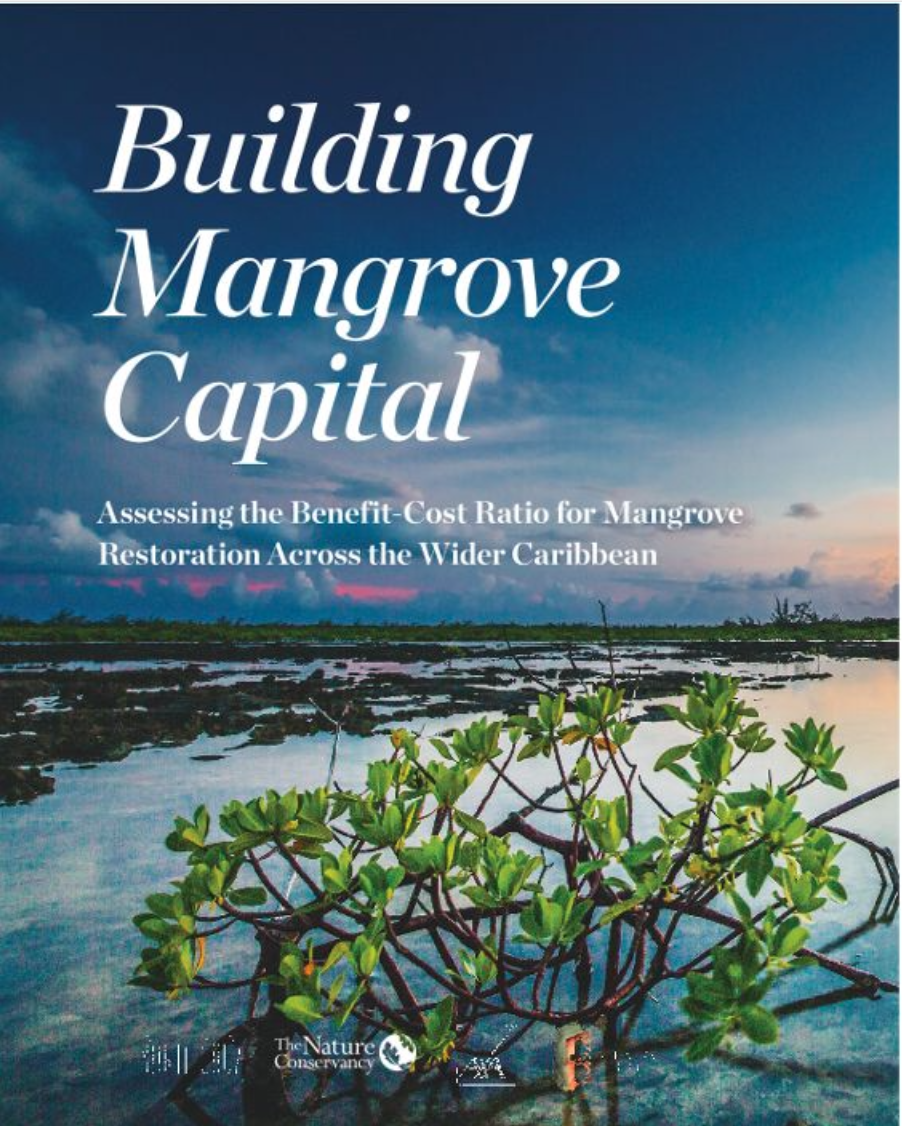
Building Mangrove Capital
Report
Assessing the Benefit-Cost Ratio for Mangrove Restoration Across the Wider Caribbean Download the report in Spanish
DOWNLOAD -
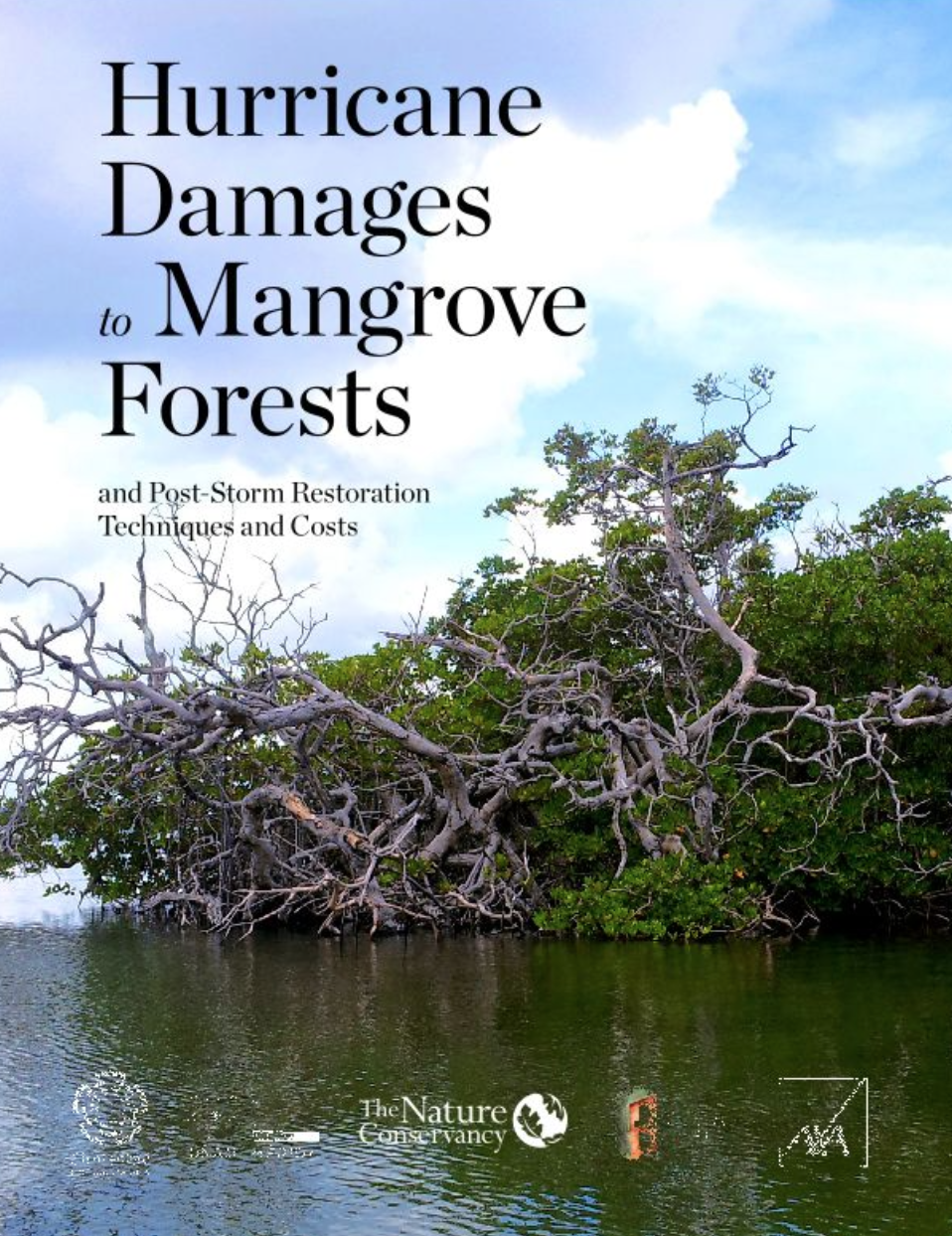
Hurricane Damages to Mangrove Forests
Report
Understanding the impact: Post-storm Restoration Techniques and Costs Download the report in Spanish
DOWNLOAD -
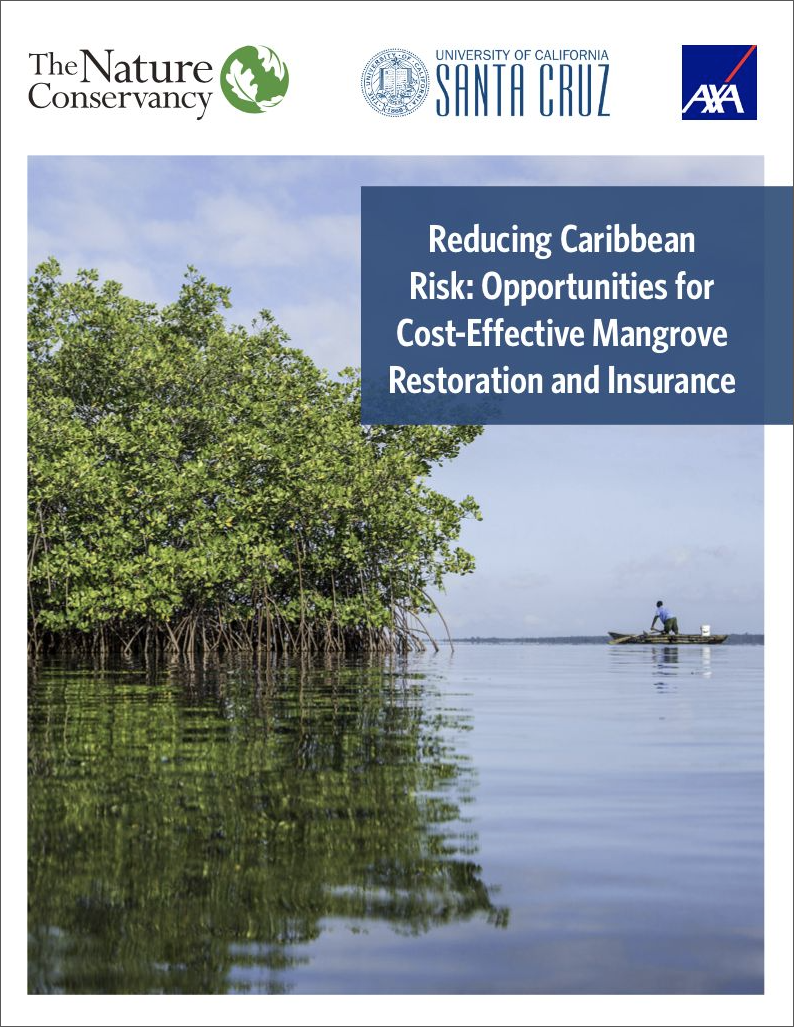
Cost-Effective Mangrove Restoration & Insurance
PDF
How a market-based mechanism could help protect key coastal habitat, featuring a case study of the Caribbean region
DOWNLOAD
Global Insights
Check out our latest thinking and real-world solutions to some of the most complex challenges facing people and the planet today.
